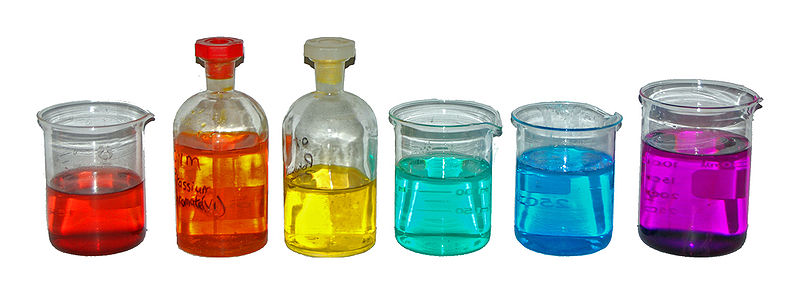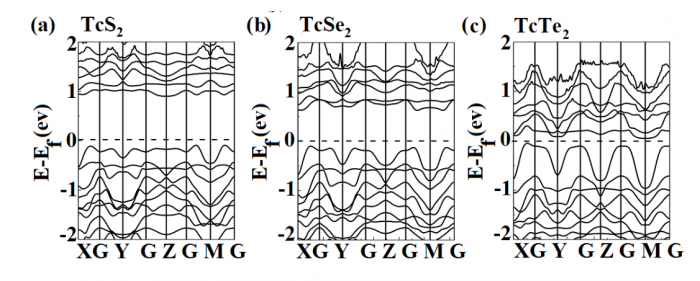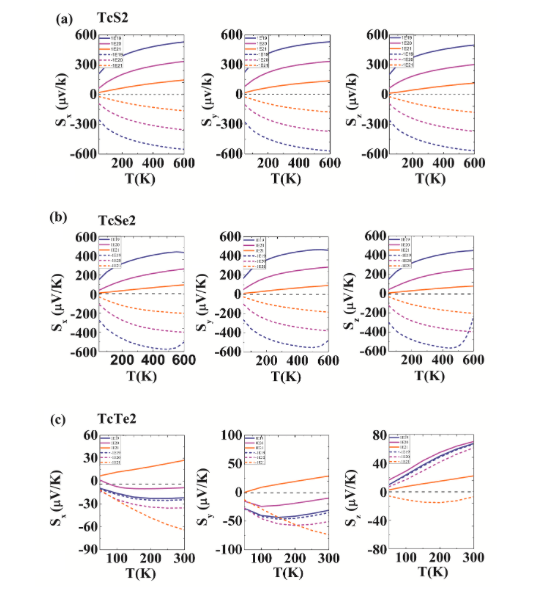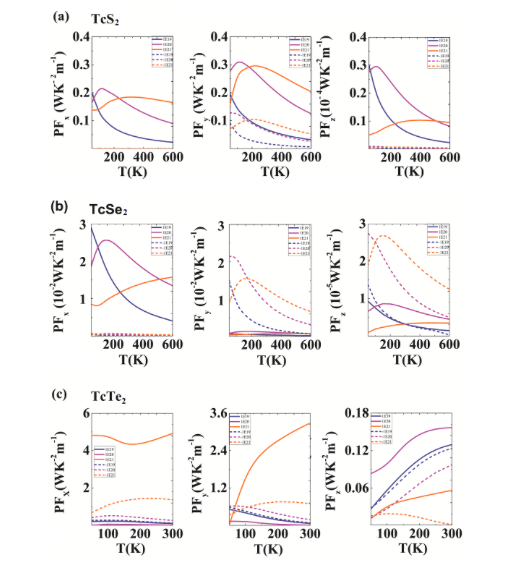
Transition metal chalcogenides (TMCs) as potential candidates for application in thermoelectric conversion field have been attracted a lot of attention. TcX2(X=S, Se, Te) are also a member of the transition metal chalcogenide (TMC) family.
In the past, structural, mechanical, electronic and optical properties of TcX2 have been investigated. But there is no research about the thermoelectric properties of these materials. TcS2, TcSe2, and TcTe2 are isostructural crystalline forms and have triclinic structures with space group P-1. The unit cell of these materials contains four formula units (Z = 4) and corresponds to the distortion of a Cd(OH)2 type cell, where the Tc atoms form Tc diamond shaped chains in the form of octahedral coordination and can be easily exfoliated in a monolayer form. These three compounds are all semiconductors.

Fig. 1. The band structure of TcS2 (a), TcSe2 (b) and TcTe2 (c) along the high symmetry k-points calculated by using LSDA+U. Image published with permission from Elsevier from https://doi.org/10.1016/j.jallcom.2018.06.119
By using first-principles density functional theory, deformation potential method and Boltzmann transport approach, the thermoelectric properties of TcX2 (X=S, Se, Te) have been studied. The results show that TcX2 (X=S, Se, Te) are semiconductors with the indirect band gap of 0.99 eV, 0.73eV, 0.10 eV, respectively. The conductivity has a larger value in the low-temperature region compared to the high-temperature region, and the conductivities for p-type doping are always greater than these for n-type doping for TcS2 and TcTe2 along all directions, for TcSe2 along x- and z-direction, then increases as doping level raises.

Fig. 2. The Seebeck coefficients for TcS2(a), TcSe2(b) and TcTe2(c) along conveyor directions as a function of temperature under various doping levels. Image published with permission from Elsevier from https://doi.org/10.1016/j.jallcom.2018.06.119
The magnitude of electrical conductivity for TcX2 (X=S, Se, Te) can reach 108/Ωm, 107/Ωm, 1011/Ωm, respectively. For TcS2, when the p-doping level is greater than 1021 cm-3, the value of electronic thermal conductivity is always larger than 200W/mK. The maximum values of electronic thermal conductivity are 400W/mK, 600W/mK and 0.04W/mK along x-, y- and z-directions, respectively. For TcSe2 the maximum value of conductivity is 8.5W/mK along x-direction, 18W/mK along y-direction and 0.03 W/mK along z-direction. For TcTe2, the electronic thermal conductivity maintains a large value in all temperature value and doping levels.

Fig. 3. The power factor of TcS2(a), TcSe2(b) and TcTe2(c) along conveyor directions as a function of temperature under various doping levels. Image published with permission from Elsevier from https://doi.org/10.1016/j.jallcom.2018.06.119
TcS2 and TcSe2 have high S for both p-type or n-type doping, which is at the magnitude of 10-4V/K, and the peaks of Seebeck coefficient shift up as the doping level is weakened. The Seebeck coefficients of TcTe2 are always smaller than V/K. The PF can be greatly enhanced by p-type doping for TcS2 and TcTe2 along all directions, for TcS2 along the x-direction. Moreover, n-type doping is much better for other directions. These phenomena mean that TcX2 has potential application in the thermoelectric field.
These findings are described in the article entitled Thermoelectric properties of TcX2(X=S, Se, Te), recently published in the Journal of Alloys and Compounds. This work was conducted by X. Jiang, L. Zhu, and K.L. Yao from the Huazhong University of Science and Technology.









